Showing 1–16 of 28 results
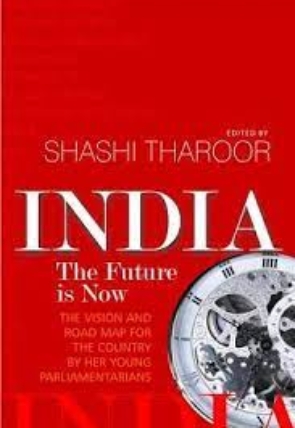
INDIA THE FUTURE IS NOW FREE BOOK PDF
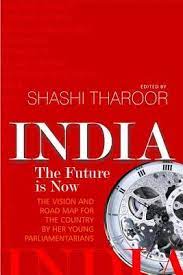
Only registered users can download this book.
Please Login/Register first.
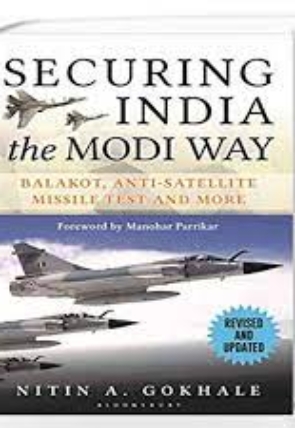
Securing India The Modi Way Free Book PDF

Only registered users can download this book.
Please Login/Register first.
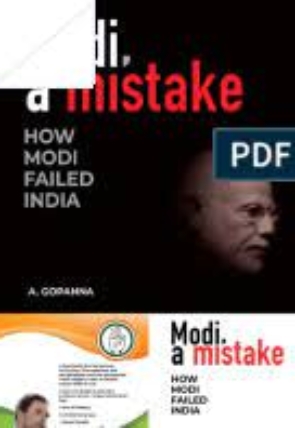
MODI A MISTAKE FREE BOOK PDF

Only registered users can download this book.
Please Login/Register first.
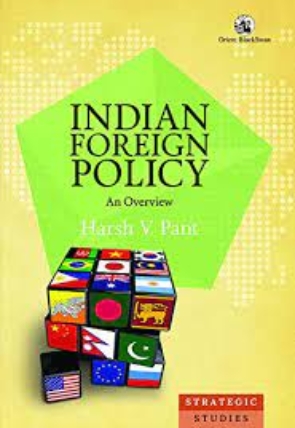
INDIAN FOREIGN POLICY FREE BOOK PDF

Only registered users can download this book.
Please Login/Register first.
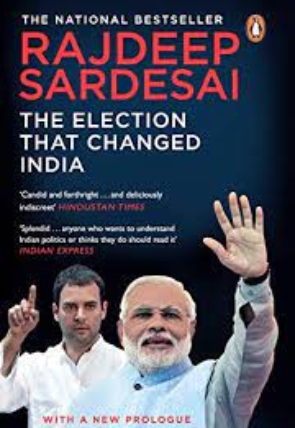
2014 ELECTIONS THAT CHANGED INDIA FREE PDF
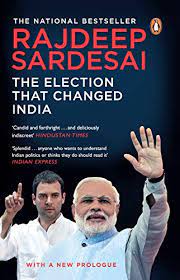
Only registered users can download this book.
Please Login/Register first.
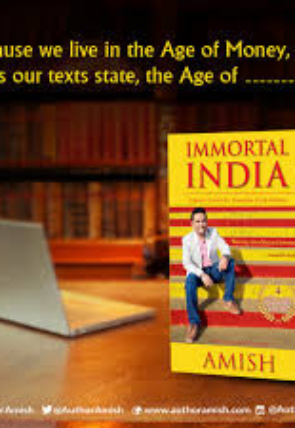
IMMORTAL INDIA FREE BOOK PDF
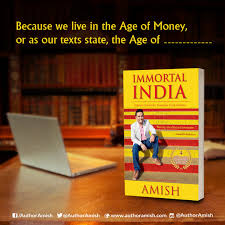
IMMORTAL INDIA BY AMISH TRIPATHI
IMMORTAL INDIA BOOK DESCRIPTION :-
India, a culture that witnessed the dawn of civilisation. That witnessed the rise of other cultures and watched them turn to dust. It has been celebrated and attacked. Admired and vilified. But through all these millennia, after all the ups and downs of history, it’s still here! And now, after a few centuries of decline, it’s driving a new dawn once again. Ajanaabhavarsh. Bharat. Hindustan. India. The names may change, but the soul of this great land is immortal.
Amish helps you understand India like never before, through a series of sharp articles, nuanced speeches and intelligent debates. Based on his deep understanding of subjects such as, religion, mythology, tradition, history, contemporary societal norms, governance, and ethics, in Immortal India: Young Country, Timeless Civilisation, Amish lays out the vast landscape of an ancient culture with a fascinatingly modern outlook.
| Title | Immortal India: Young Country, Timeless Civilisation |
| Author | Amish |
| Publisher | Amazon Publishing, 2017 |
| ISBN | 8193432002, 9788193432006 |
| Length | 188 pages |
About the Author
Amish is a 1974-born, IIM (Kolkata)-educated, boring banker turned happy author. The success of his debut book, The Immortals of Meluha (Book 1 of the Shiva Trilogy), encouraged him to give up a fourteen-year-old career in financial services to focus on writing. He is passionate about history, mythology and philosophy, finding beauty and meaning in all world religions. Amish’s books have sold more than 5.5 million copies and have been translated into over 19 languages.
www.authoramish.com
www.facebook.com/authoramish
www.instagram.com/authoramish
www.twitter.com/authoramish
Review
‘Amish is one of the most original thinkers of his generation’- Arnab Goswami
‘To Understand the New India, you need to read Amish’- Swapan Dasgupta
‘One of India’s Best Storyteller looks at today’s burning issues and clarifies the arguments’- Vir Sanghvi
‘Amish is…a deeply thoughtful mind with an unusual, original, and fascinating view of the past’- Shekhar Gupta
Only registered users can download this book.
Please Login/Register first.

INCREDIBLE HISTORY OF INDIA’S GEOGRAPHY 2021 EDITION BOOK FREE PDF

INCREDIBLE HISTORY OF INDIA’S GEOGRAPHY 2021 EDITION BOOK FREE PDF
DESCRIPTION OF BOOK :-
Maps and mountains, lions and tigers, rivers and oceans-all sorts of things you didn’t know about India’s geography
Could you be related to a blond Lithuanian? What if ostriches once roamed in India? Did you know that India is the only country that has both lions and tigers? Who found out how tall Mt Everest is?
If you’ve ever wanted to know the answers to questions like these, this is the book for you. In here you will discover various things you never expected, such as the fact that we still greet each other like the Harappans did or that people used to think India was full of one-eyed giants. And sneakily you’ll also know more about India’s history and geography by the end of it. Full of quirky pictures and crazy trivia, this book takes you on a fantastic journey through the incredible history of India’s geography.
Could you be related to a blonde Lithuanian? Did you know that India is the only country that has both lions and tigers? Who found out how tall Mt Everest is? If you’ve ever wanted to know the answers to questions like these, this is the book for you.
In here you will find various things you never expected, such as the fact that we still greet each other like the Harappans did and that people used to think India was full of one-eyed giants. And, sneakily, you’ll also know more about India’s history and geography by the end of it. Full of quirky pictures and crazy trivia, this book takes you on a fantastic journey through the incredible history of India’s geography.
The Incredible History of India’s Geography by Sanjeev Sanyal with Sowmya Rajendran, published by Puffin, is one of those magical books which manages to convert historical facts and figures into an interesting read with almost a story like feel to it.
The book explores the journey of the making of India from the ancient times to the current states wedding history with the geographical boundaries of India. The book tells us how ccivilizations flourished and died in India, how different kings invaded to conquer India, what kind of trade routes exist
Only registered users can download this book.
Please Login/Register first.

THE QUEST FOR THE ORIGIN OF VEDIC CULTURE 2021 EDITION FREE BOOK PDF

THE QUEST FOR THE ORIGIN OF VEDIC CULTURE 2021 EDITION FREE BOOK PDF
THE QUEST FOR THE ORIGIN OF VEDIC CULTURE 2021 EDITION FREE BOOK PDF DESCRIPTION :-
As a result of the discovery of similarities between Sanskrit and the classical languages of Europe, scholars hypothesized the existence of an early “proto-Indo-European” people who spoke the language from which the other Indo-European speakers evolved. The solution to this Indo-European homeland problem has been one of the most consuming intellectual projects of the last two centuries. At first it was assumed that India was the original home of all the Indo-Europeans.
Soon, however, Western scholars were contending that the Vedic culture of ancient India must have been the by-product of an invasion or migration of “Indo-Aryans” from outside the subcontinent. Over the years, Indian scholars have raised many arguments against this European reconstruction of their nation’s history, yet Western scholars have generally been unaware or dismissive of these voices from India itself. Edwin Bryant offers a comprehensive examination of this ongoing debate, presenting all of the relevant philological, archaeological, linguistic, and historiographical data, and showing how they have been interpreted both to support the theory of Aryan migrations and to contest it.
Bringing to the fore those hitherto marginalized voices that argue against the external origin of the Indo-Aryans, he shows how Indian scholars have questioned the very logic, assumptions, and methods upon which the theory is based and have used the same data to arrive at very different conclusions. By exposing the whole endeavor to criticism from scholars who do not share the same intellectual history as their European peers, Bryant’s work newly complicates the Indo-European homeland quest. At the same time it recognizes the extent to which both sides of the debate have been driven by political, racial, religious, and nationalistic agendas.
VEDIC PERIOD :-
The Vedic period, or Vedic age (c. 1500 – c. 500 BCE), is the period in the late Bronze Age and early Iron Age of the history of India when the Vedic literature, including the Vedas (ca. 1300–900 BCE), was composed in the northern Indian subcontinent, between the end of the Urban Indus Valley Civilisation and a second urbanisation which began in the central Indo-Gangetic Plain c. 600 BCE. The Vedas are liturgical texts which formed the basis of modern day Hinduism, which also developed in the Kuru Kingdom. The Vedas contain details of life during this period that have been interpreted to be historical and constitute the primary sources for understanding the period. These documents, alongside the corresponding archaeological record, allow for the evolution of the Vedic culture to be traced and inferred.
The Vedas were composed and orally transmitted with precision in this period. The Vedic society was patriarchal and patrilineal. Early Indo-Aryans were a Late Bronze Age society centred in the Punjab, organised into tribes rather than kingdoms, and primarily sustained by a pastoral way of life.
Around c. 1200–1000 BCE Vedic culture spread eastward to the fertile western Ganges Plain. Iron tools were adopted, which allowed for the clearing of forests and the adoption of a more settled, agricultural way of life. The second half of the Vedic period was characterised by the emergence of towns, kingdoms, and a complex social differentiation distinctive to India, and the Kuru Kingdom‘s codification of orthodox sacrificial ritual. During this time, the central Ganges Plain was dominated by a related but non-Vedic culture, of Greater Magadha. The end of the Vedic period witnessed the rise of true cities and large states (called mahajanapadas) as well as śramaṇa movements (including Jainism and Buddhism) which challenged the Vedic orthodoxy.
The Vedic period saw the emergence of a hierarchy of social classes that would remain influential. Vedic religion developed into Brahmanical orthodoxy, and around the beginning of the Common Era, the Vedic tradition formed one of the main constituents of “Hindu synthesis“.
Archaeological cultures identified with phases of vedic culture include the Ochre Coloured Pottery culture, the Gandhara grave culture, the black and red ware culture and the Painted Grey Ware culture.
Only registered users can download this book.
Please Login/Register first.
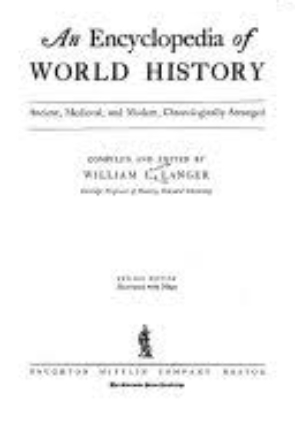
THE ENCYCLOPEDIA OF WORLD HISTORY 2021 EDITION FREE BOOK PDF

THE ENCYCLOPEDIA OF WORLD HISTORY 2021 EDITION FREE BOOK PDF
THE ENCYCLOPEDIA OF WORLD HISTORY DESCRIPTION :-
The Encyclopedia of World History is a classic single-volume work detailing world history. The first through fifth editions were edited by William L. Langer.
The Sixth Edition contained over 20,000 entries and was overseen by Peter N. Stearns.
Renowned historian Peter N. Stearns and thirty prominent historians have combined their expertise over the past ten years to perfect this comprehensive chronology of more than 20,000 entries that span the millennia from prehistoric times to the year 2000. With a unique format that has won it generations of fans, the ENCYCLOPEDIA continues to feature chronological entries grouped by geographic region, allowing readers to get an in-depth view of distinct events along with a virtual time line of human history.
But this new edition is much more than an expansion of a classic; it reflects important recent changes in historical trends and historical thinking. In addition to showcasing traditional facts of national leadership and state power, the Encyclopedia embraces social and cultural developments, non-European history, women’s history, religion, health, economics, technology, and other vital but less often reported aspects of the human drama. Here is a chronicle not only of major political events but of ordinary people, covering shifts in the relationships between men and women, developments in leisure, and demographic currents. And for all periods there are summaries of global developments that cannot be captured in national or regional frameworks.
As editor Stearns notes in his preface, “The world we know historically has greatly changed. The revisions that animate this edition celebrate this change, benefiting from the labors of countless venturesome scholars over the past several decades.” A masterwork whose roots date back to the nineteenth century, this exciting volume belongs at the elbow of every history lover and of anyone who has ever been curious about our constantly changing, remarkably diverse human story.
| Title | The Encyclopedia of World History: Ancient, Medieval, and Modern, Chronologically Arranged |
| Author | Peter N. Stearns |
| Editor | Peter N. Stearns |
| Edition | 6, illustrated |
| Publisher | Houghton Mifflin, 2001 |
| ISBN | 0395652375, 9780395652374 |
| Length | 1243 pages |
Renowned historian Peter N. Stearns and thirty prominent historians have combined their expertise over the past ten years to perfect this comprehensive chronology of more than 20,000 entries that span the millennia from prehistoric times to the year 2000. With a unique format that has won it generations of fans, the ENCYCLOPEDIA continues to feature chronological entries grouped by geographic region, allowing readers to get an in-depth view of distinct events along with a virtual time line of human history. But this new edition is much more than an expansion of a classic; it reflects important recent changes in historical trends and historical thinking. In addition to showcasing traditional facts of national leadership and state power, the Encyclopedia embraces social and cultural developments, non-European history, women’s history, religion, health, economics, technology, and other vital but less often reported aspects of the human drama. Here is a chronicle not only of major political events but of ordinary people, covering shifts in the relationships between men and women, developments in leisure, and demographic currents. And for all periods there are summaries of global developments that cannot be captured in national or regional frameworks.
As editor Stearns notes in his preface, “The world we know historically has greatly changed. The revisions that animate this edition celebrate this change, benefiting from the labors of countless venturesome scholars over the past several decades.” A masterwork whose roots date back to the nineteenth century, this exciting volume belongs at the elbow of every history lover and of anyone who has ever been curious about our constantly changing, remarkably diverse human story.
Only registered users can download this book.
Please Login/Register first.
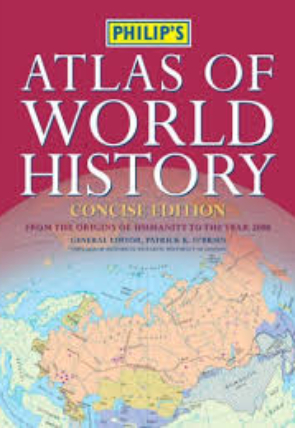
PHILLIPS ATLAS OF THE WORLD HISTORY 2021 EDITION FREE BOOK PDF

PHILLIPS ATLAS OF THE WORLD HISTORY 2021 EDITION FREE BOOK PDF
PHILLIPS ATLAS OF THE WORLD HISTORY FREE BOOK DESCRIPTION :-
A major reference work, Philip’s Atlas of World History – concise edition records the history of human society throughout the world, from prehistory to the year 2005, in 450 specially commissioned colour maps, 200 illustrations, tables and diagrams, and 200,000 words. It has been updated to include recent events across the world, including those in Iraq, Afghanistan, Russia and the former Soviet republics.
The Atlas of World History – concise edition goes beyond the conventional focus on European and American political history to give worldwide coverage of socio-economic, cultural, and religious themes. Due weight is given to regions such as Central and South America, Africa, Asia, and Oceania that are comparatively neglected by many competitor titles.
Commissioned from academic writers with direct involvement in college teaching, and with a foreword and general consultancy by Professor Patrick O’Brien, former Director of the Institute of Historical Research at the University of London, Philip’s Atlas of World History is also highly accessible for the general reader with an interest in world history.
World (human origins to c.ad 500), the Medieval World (c.500-1500), the Early Modern World (c.1500-1770), the Age of Revolutions (c.1770-1914), and the Twentieth Century (from 1914). Each part opens with a two-spread introduction that highlights the main themes of the period and outlines worldwide trends and developments. Following the introduction, individual spreads each examine a particular region over a specified period, with detailed maps, illustrations, and tables, and c.1200 words of text.
Often called the “location bible,” Here Comes The Guide features multitudes of Northern California event sites, including private estates, historic gardens, yachts, museums, wineries, hotels, and many others. Engaging descriptions give readers a clear picture of each place, while details about pricing, services, and amenities help streamline the selection process. Here Comes The Guide also includes over 125 prescreened vendors, such as photographers, caterers, florists, and cake makers, along with tips on how to hire and work with event professionals.
Philip’s Atlas of World History presents the entire story of civilisation in its physical setting, from man’s earliest beginnings to the latest political developments of the twentieth century. It is specially designed to help the reader visualise the great historical themes and turning points of the past, combining maps which graphically depict the scope of these events with text explaining key historical themes and contexts.The book is divided into five sections, each of which contains an introduction which highlights the main themes of the period and outlines its key trends and developments: 1. The Ancient World (human origins to AD500) 2. The Medieval World (500 – 1500) 3. The Early Modern World (c.1500 – 1770) 4. An Age of Revolutions (c.1770 – 1914) 5. The Twentieth Century (from 1914)These five sections contain a total of 135 double-page spreads, each of which portrays key developments in a world region over a specific period of time.Each spread features brand-new, highly-informative colour maps created by Philip’s renowned cartographers, together with complementary text which discusses and explains the larger historical, political, geographical, cultural, social and religious themes behind each topic. The book also contains a wealth of additional historical information, including a detailed 22-page time chart, a 20-page gazetteer of historical places, concise biographies of significant figures and an extensive 20-page index Successfully combining history and geography, Philip’s Atlas of World History gives the reader a fascinating, accessible and visually-exciting picture of historical events and their impact on the world we live in today.
Since it is the start of the third millennium, the University of London saw it fit to produce a new atlas of world history.
This book is downloadable in PDF Format.
Only registered users can download this book.
Please Login/Register first.
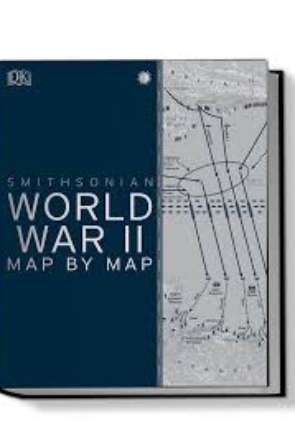
WORLD WAR II MAP BY MAP 2021 EDITION FREE BOOK PDF

WORLD WAR II MAP BY MAP 2021 EDITION FREE BOOK PDF
WORLD WAR II MAP BY MAP FREE BOOK DESCRIPTION :-
The deadliest war in history brought to life through bold, easy-to-grasp maps
In this stunning visual history ebook, purpose-made maps reveal the full story of the Second World War. From the rise of the Axis powers to the aftermath of the atomic bomb attack on Hiroshima, this ebook shows how each step of the action took place. Each map is full of detail, charting the progress of the key events of World War II on land, sea, and air, including the Dunkirk evacuation, the attack on Pearl Harbor, the D-Day landings, the siege of Stalingrad, and the war in the Pacific.
As well as purpose-made maps, historical maps from both Allied and Axis countries give compelling insights into the course of the war. There are also timelines summarizing each stage of the conflict as it unfolded, while fascinating, large-scale photographs offer a closer look at life both on and off the battlefield, introducing topics such as blitzkrieg tactics, civilian life in wartime, code-breaking, and more.
Written by a team of historians headed by Richard Overy as consultant, World War II Map by Map shows how the deadliest conflict in history changed the face of our world. It is perfect for general readers, students, and military history enthusiasts everywhere. Includes a foreword by Peter Snow, broadcaster and historian.
Trace the epic history of World War 2 across the globe with more than 100 detailed maps.
In this stunning visual history book, custom maps tell the story of the Second World War from the rise of the Axis powers to the dropping of the atom bomb on Hiroshima and Nagasaki. Each map is rich with detail and graphics, helping you to chart the progress of key events of World War II on land, sea, and air, such as the Dunkirk evacuation, the attack on Pearl Harbor, the D-Day landings, and the siege of Stalingrad.
Historical maps from both Allied and Axis countries also offer unique insights into the events. There are timelines to help you follow the story as it unfolds, while narrative overviews explain the social, economic, political, and technical developments at the time. Fascinating, large-scale pictures introduce topics such as the Holocaust, blitzkrieg, kamikaze warfare, and code-breaking.
Written by a team of historians in consultation with Richard Overy, World War II Map by Map examines how the deadliest conflict in history changed the face of our world. It is perfect for students, general readers, and military history enthusiasts.
Follow the key developments of World War II in unprecedented visual detail, with more than 100 specially created and historical maps covering all major theatres of war. Layers of information show how the conflict raged around the globe on land, air, and sea, while timelines provide an in-depth chronology of events. Stunning archival photographs, contemporary artefacts, and profiles of famous leaders reveal the full story of the war that shaped the modern world.
Written by a team of historians headed by Richard Overy as consultant, World War II Map by Map examines how the most destructive conflict in history changed the face of our world. It is perfect for students, general readers, and military history enthusiasts. Includes a foreword by broadcaster and historian Peter Snow.
Follow the key developments of World War II in unprecedented visual detail, with more than 100 specially created and historical maps covering all major theatres of war. Layers of information show how the conflict raged around the globe on land, air, and sea, while timelines provide an in-depth chronology of events. Stunning archival photographs, contemporary artefacts, and profiles of famous leaders reveal the full story of the war that shaped the modern world.
Written by a team of historians headed by Richard Overy as consultant, World War II Map by Map examines how the most destructive conflict in history changed the face of our world. It is perfect for students, general readers, and military history enthusiasts. Includes a foreword by broadcaster and historian Peter Snow.
Only registered users can download this book.
Please Login/Register first.
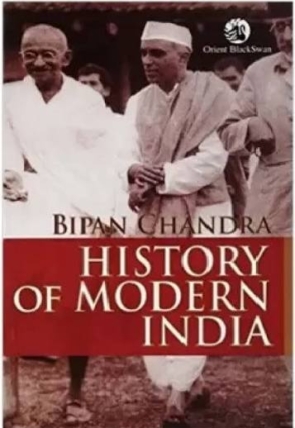
HISTORY OF MODERN INDIA 2021 EDITION FREE BOOK PDF

HISTORY OF MODERN INDIA 2021 EDITION FREE BOOK PDF
HISTORY OF MODERN INDIA FREE BOOK DESCRIPTION :-
History of Modern India presents an authoritative overview of the history of what was known as British India. The text is largely based on the author s research on nationalism and colonialism in India and also draws from the works of eminent historians of the period. Challenging and revising colonial and nationalist interpretations of history, this book moves away from a largely political narrative to a social, economic and religious history of modern India. It explains how conditions in India during the eighteenth century helped the British East India Company establish its rule in India. It also gives us important insights into the primary aim of colonial rule which was the economic exploitation of India through trade and investment. The topics are arranged thematically in order to showcase the various forces that went into the making of independent India. However, in the entire arrangement of themes, the chronology of the period is enmeshed innovatively with the various forces that evolved both as a cause and effect of British imperialist rule of the subcontinent. The book also provides a detailed account of the nationalist movement and introduces us to the contributions of different individuals who were behind the nationalist movement. A comprehensive textbook for students of history and interested readers, History of Modern India is essential reading for a broad based understanding of the making of modern India.
History of India can be dated as far as 5300 years ago. Modern Indian History is considered the history 1850 onwards. A major part of Modern Indian History was occupied by the British Rule in India. In this chapter, we’ll learn about Modern Indian History i.e. British Rule, Freedom Struggle, Independence and so on.
Content of History of Modern India By Bipan Chandra
This book covers 15 chapters on the modern period of Indian history. The details of chapters are as follow:
History of Modern India By Bipan Chandra (English Edition)
- The decline of the Mughal empire
- Indian states and society in the 18th century
- The beginnings of European settlements
- The structure of government and the economic policies of the British Empire in India, 1757-1857
- Administrative organization and social
- Cultural awakening in the first half of the 19th century
- Revolt of 1857
- Administrative changes after 1838
- India and her neighbors
- The economic impact of British rule
- The nationalist movement 1858-1905
- Growth of new India religious and social reform
- Movement 1905-1918
- Struggle of swaraj
- British conquest of India
History of Modern India by Bipan Chandra is a book that provides the readers with insights into the history of British India, and the factors that contributed to the independence of the country. Summary Of The Book Adhunik Bharat Ka Ithihaas English) provides the readers a great deal of information on the history of British India. Thiis English edition of History of Modern India is based on Chandraâ??s extensive study of colonialism and nationalism in the country. Additionally, he also includes insights from well-known historians of that time frame. This bookâ??s primary focus is on the forces, institutions, and movements during this period, instead of diplomatic and military events. Through the course of this book, Chandra also provides insights into the impact of British imperialism on the economic, social, and administrative life of Indian citizens. He also tells the readers about the response of Indians to this move by the British. Chandra also throws light on the political and economic scenario in the country during the 18th century, which made it possible for foreign merchants to conquer this land. The content of this book is presented in a thematic order, which helps the readers understand the material better. Adhunik Bharat Ka Ithihaas (English) contains insights into the factors that led to the development of a nation-wide struggle against the British rule. It also contains detailed information on the Nationalist movement, highlighting the contributions of several leaders.
Only registered users can download this book.
Please Login/Register first.
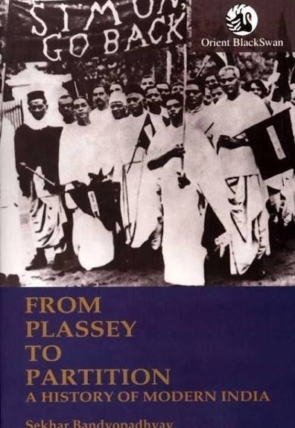
FROM PLASSEY TO PARTITION : A HISTORY OF MODERN INDIA 2021 EDITION FREE BOOK PDF
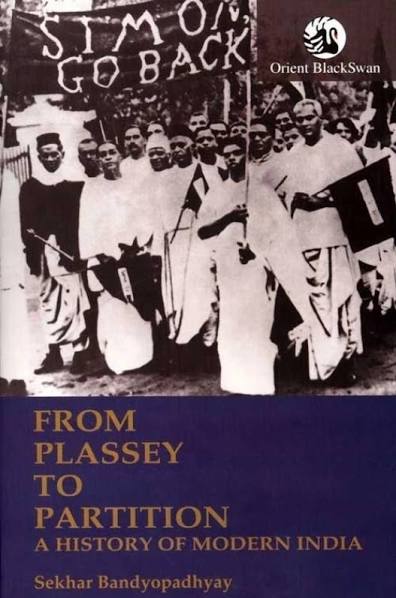
FROM PLASSEY TO PARTITION : A HISTORY OF MODERN INDIA FREE BOOK PDF
FROM PLASSEY TO PARTITION : A HISTORY OF MODERN INDIA FREE BOOK DESCRIPTION :-
From Plassey to Partition is an eminently readable account of the emergence of India as a nation. It covers about two hundred years of political and socio-economic turbulence. Of particular interest to the contemporary reader will be sections such as Early Nationalism: Discontent and Dissension , Many Voices of a Nation and Freedom with Partition . On the one hand, it converses with students of Indian history and on the other, it engages general and curious readers. Few books on this crucial period of history have captured the rhythms of India s polyphonic nationalism as From Plassey to Partition.
This book is now regarded as a major intervention in the historiography of modern India, and an authoritative account of the largest anti-imperialist movement in the world.
It traces India s colonial encounter, her nationalist longings, and her emergence as a sovereign, democratic republic, along with radical social transformations over two centuries.
And this enlarged edition offers a perceptive analysis of India s efforts towards modernisation and democratisation since Independence.
The book addresses important historiographical questions by taking cognisance of emergent perspectives adopted by social science scholarship over the last twenty-five years.
The book engages in debates on issues like political economy in eighteenth-century India, socio-religious reform and the nationalist movement.
It offers a detailed study and analysis of the freedom struggle through its Moderate, Extremist and Gandhian phases, and events like the Swadeshi, Khilafat Non-Cooperation, Civil Disobedience and Quit India Movements.
There is a focus on other strands of the nationalist movement from the revolutionary to socialist and other leftist groups, and the role of women and its various ideological contestations.
The newly added concluding chapter links contemporary debates about Indian nationhood with changes in society, economy and polity, from the years of state-directed planning under a one-party system to the emergence of a market economy in an era of predominantly coalition governments.
“synopsis” may belong to another edition of this title.
This book is now regarded as a major intervention in the historiography of modern India, and an authoritative account of the largest anti-imperialist movement in the world.
It traces India s colonial encounter, her nationalist longings, and her emergence as a sovereign, democratic republic, along with radical social transformations over two centuries.
And this enlarged edition offers a perceptive analysis of India s efforts towards modernisation and democratisation since Independence.
The book addresses important historiographical questions by taking cognisance of emergent perspectives adopted by social science scholarship over the last twenty-five years.
The book engages in debates on issues like political economy in eighteenth-century India, socio-religious reform and the nationalist movement.
It offers a detailed study and analysis of the freedom struggle through its Moderate, Extremist and Gandhian phases, and events like the Swadeshi, Khilafat Non-Cooperation, Civil Disobedience and Quit India Movements.
There is a focus on other strands of the nationalist movement from the revolutionary to socialist and other leftist groups, and the role of women and its various ideological contestations.
The newly added concluding chapter links contemporary debates about Indian nationhood with changes in society, economy and polity, from the years of state-directed planning under a one-party system to the emergence of a market economy in an era of predominantly coalition governments.
“synopsis” may belong to another edition of this title.
More than a survey, and much more than a thematically arranged narrative, From Plassey To Partition is an eminently readable account of the emergence of India as a nation. It maps a wide and often complicated terrain of historical happenings, their main players in groups and as individuals, and contexts that enable us to see the formation of a nation through documents of resistance and struggle, assimilation and rejection.
Only registered users can download this book.
Please Login/Register first.
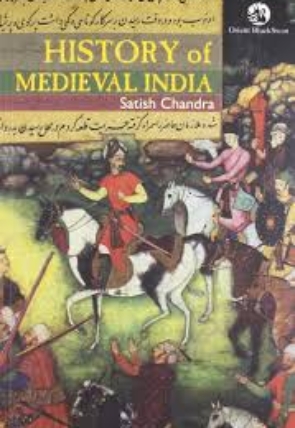
HISTORY OF MEDIEVAL INDIA 2021 EDITION FREE BOOK PDF

HISTORY OF MEDIEVAL INDIA FREE BOOK PDF
HISTORY OF MEDIEVAL INDIA FREE BOOK DESCRIPTION :-
Satish Chandra’s History of Medieval India is a comprehensive overview of the history of the Indian subcontinent during the thousand-year period between the eighth and the eighteenth century. History of Medieval India studies this interesting period in Indian history when the land underwent drastic changes, deeply influenced by the invading armies, religious movements and the vicissitudes of the changing political, economic and cultural scene. To tell the history of a land spanning the geographical dimensions and the political divisions of the Indian subcontinent is in itself a formidable task. Satish Chandra executes this difficult mission with the eye of an enquirer and the pen of a scholar. Both students and interested readers are sure to find this volume, dealing with the histories of the Cholas, Rajputs, the invading Turks, Vijayanagara kings, Bahmanids, Mughals, Marathas and others, an essential reader for understanding the history of medieval India.
- Publisher : Orient Blackswan Private Limited (27 August 2018)
- Language : English
- File size : 8452 KB
- Text-to-Speech : Enabled
- Enhanced typesetting : Enabled
- X-Ray : Not Enabled
- Word Wise : Enabled
- Print length : 376 pages
About the Author
One definition includes the period from the 6th century, the “first half of the 7th century”, or the 8th century up to the 16th century, essentially coinciding with the Middle Ages of Europe. It may be divided into two periods: The ‘early medieval period’ which lasted from the 6th to the 13th century and the ‘late medieval period’ which lasted from the 13th to the 16th century, ending with the start of the Mughal Empire in 1526. The Mughal era, from the 16th century to the 18th century, is often referred to as the early modern period, but is sometimes also included in the ‘late medieval’ period.
An alternative definition, often seen in those more recent authors who still use the term at all, brings the start of the medieval times forward, either to about 1000 CE, or to the 12th century. The end may be pushed back to the 18th century, Hence, this period can be effectively considered as the beginning of Muslim domination to British India. Or the “early medieval” period as beginning in the 8th century, and ending with the 11th century.
The use of “medieval” at all as a term for periods in Indian history has often been objected to, and is probably becoming more rare (there is a similar discussion in terms of the history of China). It is argued that neither the start nor the end of the period really mark fundamental changes in Indian history, comparable to the European equivalents. Burton Stein still used the concept in his A History of India (1998, referring to the period from the Guptas to the Mughals), but most recent authors using it are Indian. Understandably, they often specify the period they cover within their titles.
Only registered users can download this book.
Please Login/Register first.
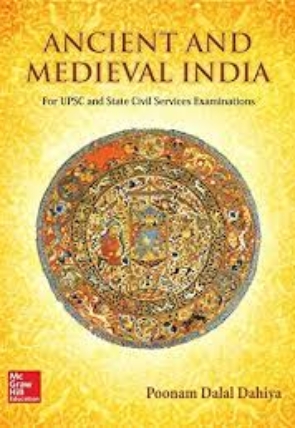
ANCIENT AND MEDIEVAL INDIA
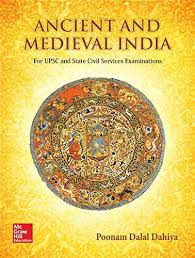
Only registered users can download this book.
Please Login/Register first.
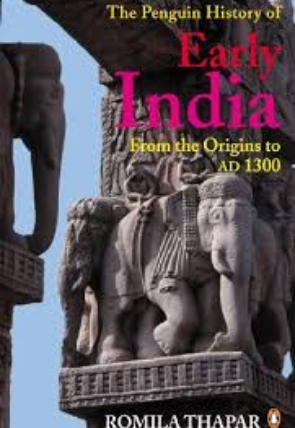
THE PENGUIN HISTORY OF EARLY INDIA
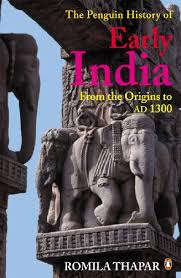
Only registered users can download this book.
Please Login/Register first.